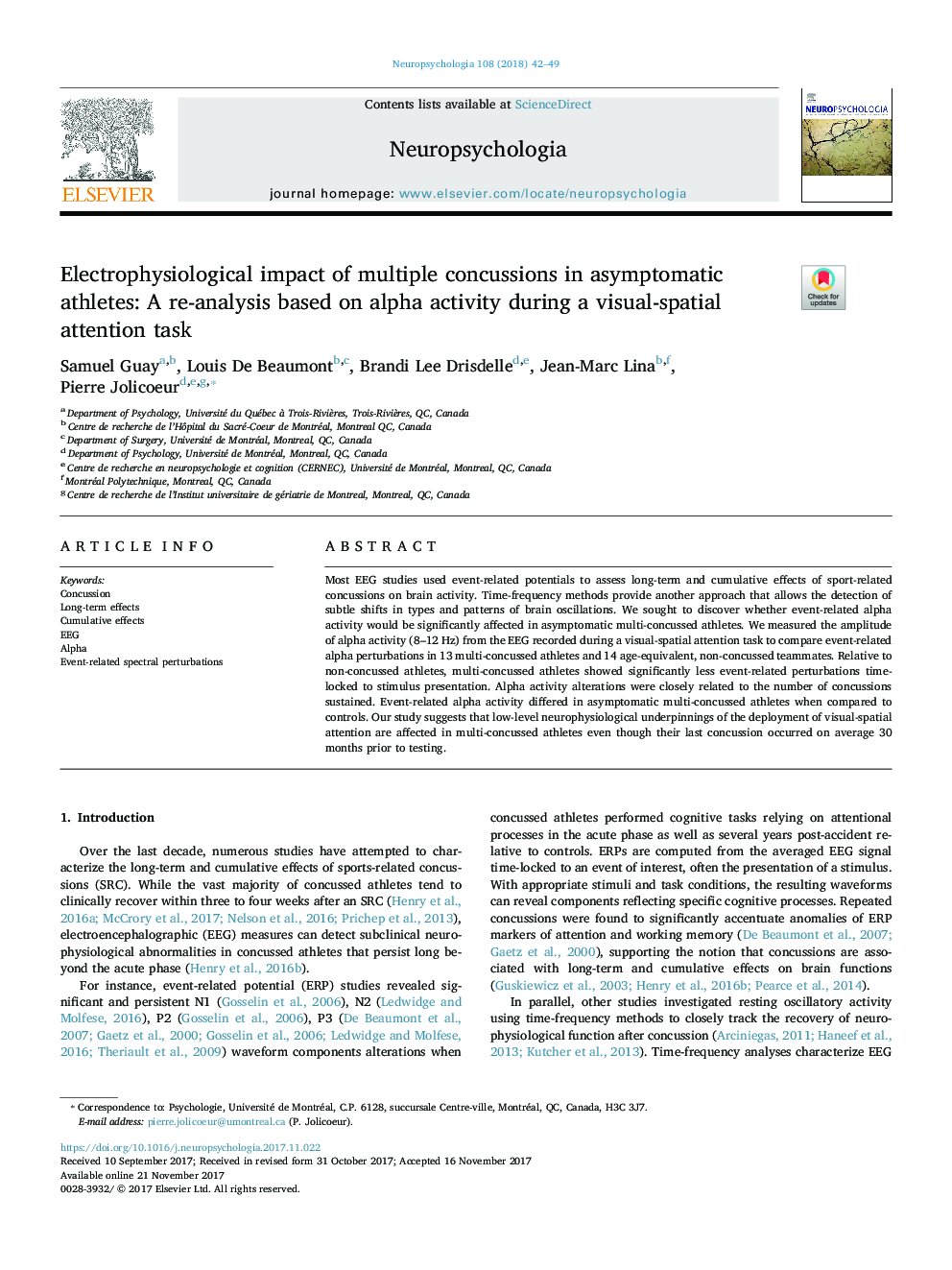| Article ID | Journal | Published Year | Pages | File Type |
|---|---|---|---|---|
| 7318150 | Neuropsychologia | 2018 | 8 Pages |
Abstract
Most EEG studies used event-related potentials to assess long-term and cumulative effects of sport-related concussions on brain activity. Time-frequency methods provide another approach that allows the detection of subtle shifts in types and patterns of brain oscillations. We sought to discover whether event-related alpha activity would be significantly affected in asymptomatic multi-concussed athletes. We measured the amplitude of alpha activity (8-12Â Hz) from the EEG recorded during a visual-spatial attention task to compare event-related alpha perturbations in 13 multi-concussed athletes and 14 age-equivalent, non-concussed teammates. Relative to non-concussed athletes, multi-concussed athletes showed significantly less event-related perturbations time-locked to stimulus presentation. Alpha activity alterations were closely related to the number of concussions sustained. Event-related alpha activity differed in asymptomatic multi-concussed athletes when compared to controls. Our study suggests that low-level neurophysiological underpinnings of the deployment of visual-spatial attention are affected in multi-concussed athletes even though their last concussion occurred on average 30 months prior to testing.
Related Topics
Life Sciences
Neuroscience
Behavioral Neuroscience
Authors
Samuel Guay, Louis De Beaumont, Brandi Lee Drisdelle, Jean-Marc Lina, Pierre Jolicoeur,
